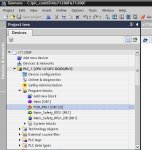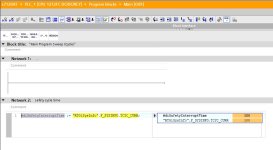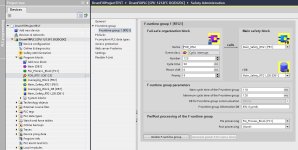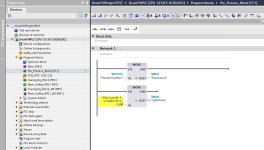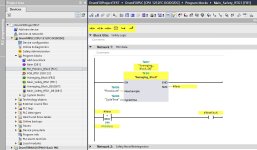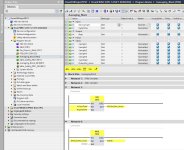Hello,
First time poster and first time Siemens programmer here.
I have an S7-1212 FC I'm programming in TIA Portal V15.1 and I'm hoping there's a word or two somewhere in the program that will allow me to create an alias for the programmed cycle time of the Fail-safe Organization Block.
In other words, I want to read the programmed cycle time of a cyclic interrupt for use in my program.
My goal would be to have an FB or FC that takes five samples from an HSC and averages the pulse rate based on the cycle time, without the use of a separate database constant.
I also see other applications where this would be useful, so I figured it was worth asking.
Thank you
First time poster and first time Siemens programmer here.
I have an S7-1212 FC I'm programming in TIA Portal V15.1 and I'm hoping there's a word or two somewhere in the program that will allow me to create an alias for the programmed cycle time of the Fail-safe Organization Block.
In other words, I want to read the programmed cycle time of a cyclic interrupt for use in my program.
My goal would be to have an FB or FC that takes five samples from an HSC and averages the pulse rate based on the cycle time, without the use of a separate database constant.
I also see other applications where this would be useful, so I figured it was worth asking.
Thank you




